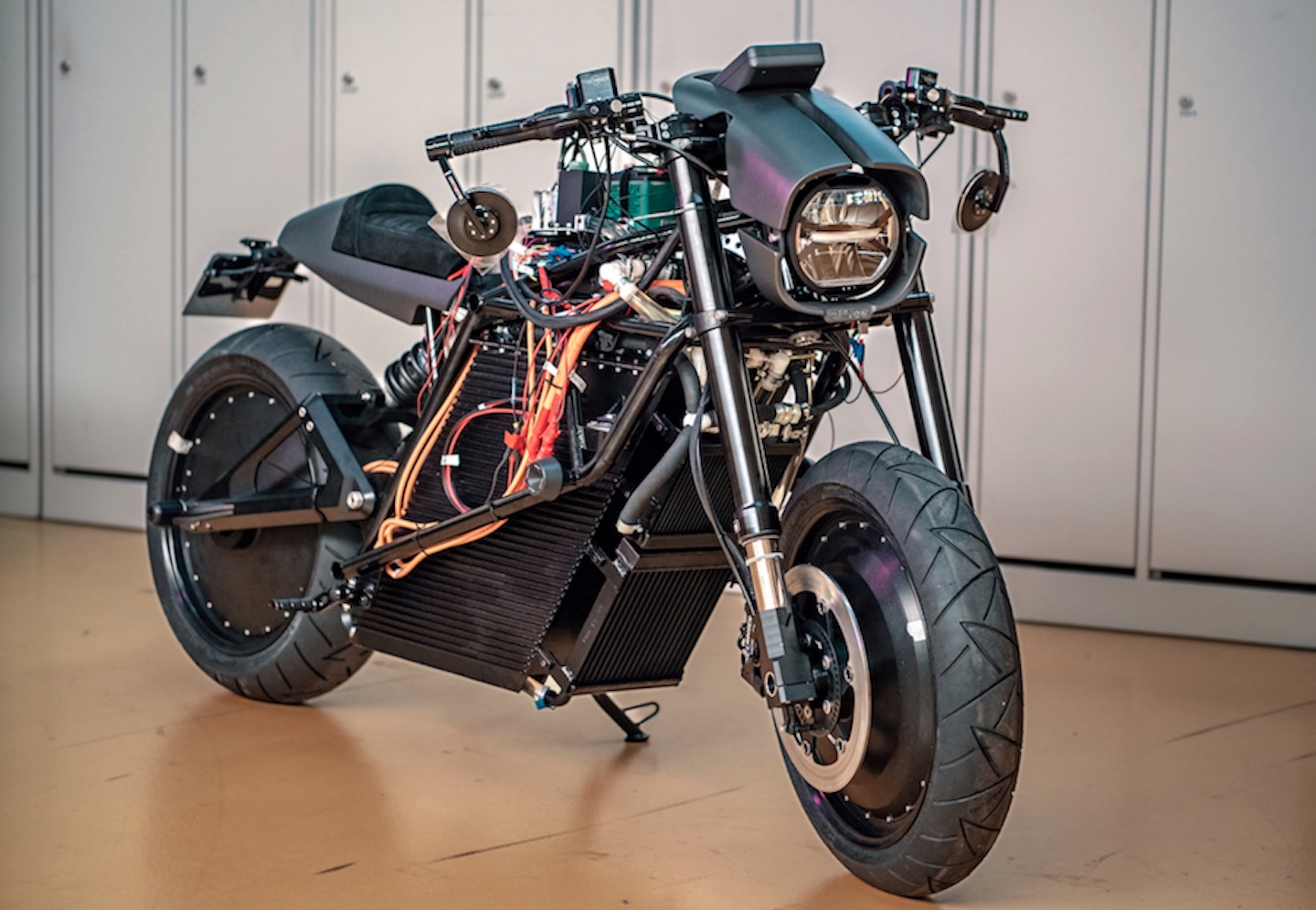 ETHEC city is a Swiss student project that aims to radically change the mobility of tomorrow with the technologies of today. To face the challenges of climate change and sustainability, the team develops an electric motorcycle with an ingenious two-wheel drive that saves energy and improves the range.
ETHEC city is a Swiss student project that aims to radically change the mobility of tomorrow with the technologies of today. To face the challenges of climate change and sustainability, the team develops an electric motorcycle with an ingenious two-wheel drive that saves energy and improves the range.
Developing sustainable vehicles
Tobias Oesch studies mechanical engineering at the ETH Zurich and is the technical lead of the ETHEC city project. In a team of nine other ETH students he took up the challenge to develop a prototype of an electric motorcycle in just one year – from the concept to construction, assembly, and testing. Tobias was motivated to tackle one of today’s main issues of the automotive sector: Sustainability. «If we want to address the problems of the climate change, we have to make severe improvements to our urban and sub-urban mobility», he states. «Motorcycles are more efficient than common cars, but we barely see all-electric motorcycles on our streets – that has to change.»
In common motorcycles around 80% of the energy is lost in particular at the front wheel, which leads to electrical vehicles with significantly shorter ranges. The team’s approach to that issue is simply ingenious: «We decided to integrate an electric motor in the front wheel as well, such that we can use it as a generator to recuperate the whole movement energy back into the system again», Tobias explains. By recovering the braking power with a two-hub motor, it becomes possible to reach longer distances with a smaller battery, thereby drastically improving the efficiency of the motorcycle. For the students, the project is part of a bigger picture: «The ETHEC city is primarily a research prototype for us to investigate this recuperation method and thus improve the e-mobility sector in the future.»
With a small budget and a tight schedule to construct the motorcycle, conventional manufacturing methods soon turned out to be unsuitable for the team. «Since it is a prototype, we often only needed single work pieces and not a thousand – in these cases additive technologies are ideal», as Tobias puts it. The team decided to use Stereolithography (SLA), Selective Laser Sintering (SLS) and Selective Laser Melting (SLM) to 3D print several design parts of the casing but also structural components such as the mounting of the foot pegs. Tobias emphasizes the degrees of freedom the students gained by implementing these technologies: «With 3D printing you can build more complex structures, which gives you the possibility to combine several functions into one part.» Fewer parts mean lower costs and more importantly less weight – a key advantage, especially for vehicles.
High durability and strength: The SLS printed casing of the display and the fuel filler flap.
Laser sintering as a driving force
Constructed to work as end-use parts, the requirements for the 3D printed objects were high: Apart from being lightweight, they also had to be durable and strong – material properties that apply well to Selective Laser Sintering. When the students began looking out for partners, the Swiss based manufacturer of SLS printers Sintratec decided to sponsor several components to support the project. Subsequently, parts such as the casing for the display or the fuel filler flap were laser sintered on the Sintratec S2 system using Sintratec PA12 nylon powder – with convincing results. «The quality of Sintratec’s products were extraordinarily precise with a very good surface quality», Tobias points out. «The display case in particular had to be durable enough to be protected against the weather, strong enough to sustain mechanical impacts, and also robust enough to be used without deforming it.» For the ETH student, the SLS components fulfilled these demands.
Great example for the advantages of SLS: The casing of the front display was quickly 3D printed, sent to ETHEC, and after painting built right into the motorcycle.
A promising future for E-mobility
After painting, the team assembled the Sintratec parts and is now close to finishing their prototype. «We enjoyed working with a company also from Switzerland since we had a very close contact and no delivery delays», Tobias says. What is his verdict on the SLS technology? «For our application, SLS was the best manufacturing solution. However, when it comes to larger series, it can become very expensive and I think it still has a long way to go regarding mass production.» With a system like the Sintratec S2 – that is suitable for small to mid-sized series – the potential for the industry is evident. Tobias summarizes: «In my opinion, the SLS technology definitely has a place in the automotive sector. It will play an important role especially in prototyping and developing vehicles for the future!» A future of mobility, that hopefully will be shaped by projects like ETHEC city.